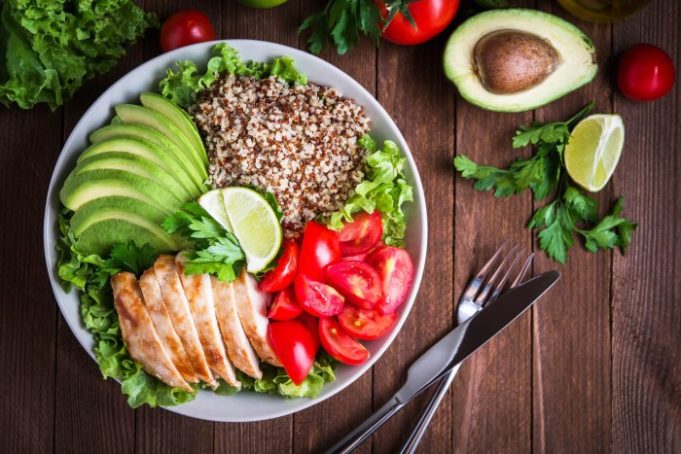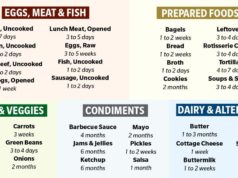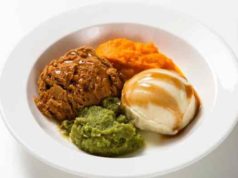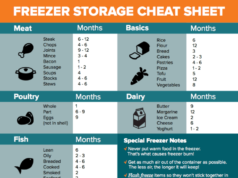How to puree food for elderly individuals with chewing or swallowing difficulties is a vital skill for caregivers and family members. Pureeing food allows those with these challenges to enjoy a variety of nutritious meals while ensuring their safety and well-being. This guide will cover everything you need to know about preparing delicious and nourishing pureed meals, from selecting the right tools to adding flavor and texture.
From understanding the benefits of a pureed diet to mastering various pureeing techniques, we will explore the importance of maintaining nutritional value, ensuring food safety, and creating visually appealing presentations. We will also provide tips and tricks for successful pureeing, making the process easier and more enjoyable for both the caregiver and the elderly individual.
Understanding the Need for Pureed Food
Pureed food is a type of diet that involves blending food into a smooth, easy-to-swallow consistency. This type of diet is often recommended for elderly individuals who have difficulty chewing or swallowing, which can be caused by various health conditions.
Benefits of Pureed Food for Elderly Individuals
Pureed food offers several benefits for elderly individuals facing chewing and swallowing challenges.
- Reduced risk of choking: Pureed food eliminates the need to chew, significantly reducing the risk of choking, which is a serious concern for individuals with swallowing difficulties.
- Improved nutrient intake: Pureed food allows individuals to consume a wider variety of foods, ensuring adequate nutrient intake, which is crucial for maintaining overall health and well-being.
- Enhanced digestion: The smooth texture of pureed food is easier for the digestive system to process, leading to improved digestion and reduced discomfort.
- Increased independence: By enabling individuals to eat independently, pureed food promotes a sense of independence and dignity, contributing to their overall quality of life.
Health Conditions That May Require a Pureed Diet
Several health conditions can affect chewing and swallowing abilities, necessitating a pureed diet.
- Stroke: A stroke can cause muscle weakness or paralysis, affecting the ability to chew and swallow.
- Parkinson’s disease: This neurological disorder can lead to tremors and difficulty controlling facial muscles, impacting chewing and swallowing.
- Cerebral palsy: A neurological disorder that affects muscle movement and coordination, making chewing and swallowing challenging.
- Alzheimer’s disease: This neurodegenerative disease can impair cognitive function, including the ability to chew and swallow.
- Oral cancer: Surgery or radiation therapy for oral cancer can damage the mouth and throat, affecting swallowing.
- Dental problems: Missing teeth, dentures that don’t fit well, or gum disease can make chewing difficult.
- Dysphagia: A medical term for swallowing difficulties, which can be caused by various factors, including muscle weakness, nerve damage, or structural abnormalities in the throat.
Examples of Commonly Pureed Foods
A wide variety of foods can be pureed for elderly individuals, ensuring a balanced and flavorful diet.
- Fruits: Applesauce, bananas, peaches, berries, and melons are excellent choices.
- Vegetables: Carrots, sweet potatoes, peas, squash, and spinach can be blended into smooth purees.
- Grains: Cooked rice, oatmeal, and pasta can be pureed and combined with other ingredients.
- Proteins: Chicken, fish, and tofu can be pureed and added to soups, stews, or sauces.
- Dairy: Yogurt, cottage cheese, and milk can be incorporated into pureed recipes.
Essential Tools and Equipment
Pureeing food for the elderly is essential for making meals easier to eat and digest. While there are various tools available, understanding their strengths and weaknesses is crucial to making the right choice for your needs.
Tools for Pureeing Food
Choosing the right tool depends on the desired consistency, frequency of use, and budget. Here’s a breakdown of common options:
- Blender: Blenders are powerful machines that can quickly and efficiently puree a wide range of foods. They’re particularly good for creating smooth, velvety textures. However, they can be bulky and noisy, and cleaning them can be a challenge.
- Food Processor: Food processors are versatile kitchen appliances that can chop, slice, and puree food. They offer more control over the texture of the puree, allowing for chunkier or smoother results. However, they can be expensive and may not be as efficient as blenders for pureeing large quantities.
- Immersion Blender: Immersion blenders, also known as stick blenders, are compact and easy to use. They’re perfect for pureeing small batches of food directly in pots and pans, eliminating the need for transferring food. However, they may not be as powerful as blenders or food processors, and they can be less effective for pureeing tougher ingredients.
- Hand-Held Masher: Hand-held mashers are simple and inexpensive tools that are ideal for mashing soft foods like potatoes, bananas, and cooked vegetables. They’re not suitable for creating smooth purees, but they can be helpful for achieving a slightly chunky texture.
Comparison of Pureeing Tools
| Feature | Blender | Food Processor | Immersion Blender | Hand-Held Masher |
|---|---|---|---|---|
| Consistency | Smooth | Variable (smooth to chunky) | Smooth to slightly chunky | Chunky |
| Capacity | Large | Medium | Small | Small |
| Cost | Moderate to high | High | Low to moderate | Low |
| Efficiency | High | Moderate | Moderate | Low |
| Ease of Use | Moderate | Moderate | High | High |
| Cleaning | Moderate | Moderate | High | High |
Techniques for Pureeing Food
Pureeing food for the elderly is an excellent way to ensure they receive adequate nutrition, especially if they have difficulty chewing or swallowing. Several techniques can be used to create smooth, easy-to-digest purees.
Blending
Blending is a common and effective technique for pureeing food. It involves using a blender to break down food into a smooth consistency.
- Start with small portions: Add a small amount of food to the blender at a time to prevent overloading and ensure proper blending.
- Add liquid gradually: Start with a small amount of liquid, such as water, broth, or milk, and add more as needed to achieve the desired consistency.
- Blend until smooth: Blend the food until it reaches a smooth, lump-free consistency. You may need to stop the blender and scrape down the sides to ensure even blending.
- Use a tamper: If the food is thick, use a tamper to push it down into the blades for better blending.
Processing
Food processors are another excellent option for pureeing food. They are particularly helpful for processing larger quantities of food.
- Use the appropriate blade: Choose the blade designed for pureeing or chopping food.
- Add food in small batches: Add food to the processor in small batches to prevent overloading.
- Pulse until smooth: Pulse the processor until the food reaches the desired consistency. Be careful not to over-process, as it can make the puree too smooth.
Steaming
Steaming is a healthy and gentle way to cook food before pureeing. It helps preserve nutrients and flavors.
- Steam vegetables and fruits: Steam vegetables and fruits until tender, then puree them using a blender or food processor.
- Add liquid for steaming: Use water, broth, or fruit juice for steaming. The liquid will add flavor and moisture to the puree.
- Strain the liquid: If desired, strain the liquid from the steamed food before pureeing to control the consistency of the puree.
Mashing
Mashing is a simple technique that can be used for soft foods like bananas, avocados, and cooked potatoes.
- Use a fork or potato masher: Mash the food until it reaches a smooth consistency.
- Add liquid for consistency: Add a small amount of liquid, such as milk or broth, if needed to make the mashed food smoother.
Table of Techniques for Different Food Types, How to puree food for elderly
| Food Type | Recommended Technique(s) |
|---|---|
| Fruits | Blending, Processing, Mashing (for soft fruits) |
| Vegetables | Blending, Processing, Steaming |
| Meats | Blending, Processing |
| Grains | Blending, Processing |
Maintaining Nutritional Value
Pureeing food for the elderly is not just about making it easier to eat; it’s also crucial to ensure they’re getting the nutrients they need to stay healthy. The process of pureeing can sometimes lead to the loss of valuable vitamins, minerals, and antioxidants. Fortunately, there are techniques and strategies you can use to minimize nutrient loss and ensure your pureed meals are packed with nutrition.
Preserving Nutrients During Pureeing
The key to preserving nutrients in pureed foods is to minimize the amount of time and heat they are exposed to. This can be achieved through various methods, including:
- Using a food processor or blender with a “pulse” function: This allows you to blend the food in short bursts, reducing the amount of heat generated.
- Steaming or microwaving vegetables instead of boiling: Boiling can leach out nutrients into the water. Steaming or microwaving retains more nutrients and helps preserve the natural flavors of the food.
- Adding liquids gradually: Adding too much liquid at once can dilute the nutrients and make the puree watery. Start with a small amount of liquid and gradually add more as needed.
- Using a strainer instead of a fine-mesh sieve: A fine-mesh sieve can trap valuable nutrients, especially from fruits and vegetables. A strainer allows for a smoother puree while preserving more nutrients.
Adding Nutrients Back Into Pureed Foods
Sometimes, even with careful pureeing techniques, some nutrient loss is inevitable. In these cases, you can add back essential nutrients through:
- Adding fresh herbs and spices: Herbs and spices not only add flavor but are also packed with antioxidants and other beneficial compounds.
- Using fortified ingredients: Fortified milk, yogurt, and bread can provide additional vitamins and minerals.
- Adding a sprinkle of nutritional yeast: This deactivated yeast is a good source of B vitamins and protein.
- Incorporating ground flaxseed or chia seeds: These seeds are rich in omega-3 fatty acids and fiber.
Tips for Retaining Vitamins and Minerals
Here are some additional tips to help you retain the maximum nutritional value in your pureed foods:
- Use fresh ingredients whenever possible: Fresh produce generally has higher nutrient content than frozen or canned options.
- Avoid over-processing: The longer food is exposed to heat and air, the more nutrients it loses. Puree foods just until they reach the desired consistency.
- Store pureed food properly: Refrigerate pureed food in airtight containers to prevent oxidation and nutrient loss.
“Remember, the goal is to create pureed meals that are both delicious and nutritious, ensuring that your loved one receives the nourishment they need.”
Adding Flavor and Texture
Pureed foods, while beneficial for those with chewing difficulties, can sometimes lack the flavor and texture variety that makes meals enjoyable. Adding flavor and adjusting the texture of pureed foods can make them more appealing and encourage better eating habits.
Adding Flavor to Pureed Foods
Adding flavor to pureed foods is essential for making them enjoyable and encouraging better eating habits. There are various ways to enhance the taste of pureed meals without compromising their texture.
- Herbs and Spices: Fresh or dried herbs and spices can add depth and complexity to pureed foods. For example, a sprinkle of parsley, basil, or oregano can enhance the flavor of vegetable purees, while a pinch of cumin or coriander can add warmth to lentil or bean purees.
- Citrus Juices: Lemon, lime, or orange juice can brighten the flavor of pureed foods and provide a refreshing touch. A squeeze of lemon juice can elevate the taste of fish or chicken purees, while a splash of lime juice can add zest to vegetable purees.
- Vinegar and Sauces: A touch of vinegar, such as balsamic or apple cider vinegar, can add a tangy element to pureed foods. Similarly, a drizzle of flavorful sauces, like pesto, salsa, or chutney, can elevate the taste and add complexity.
- Flavorful Ingredients: Incorporating ingredients like roasted garlic, caramelized onions, or sautéed mushrooms can add depth and richness to pureed foods. These ingredients can be pureed with the main ingredients or added as a topping.
Adjusting Texture of Pureed Foods
Adjusting the texture of pureed foods is crucial for accommodating individual preferences and ensuring comfortable consumption.
- Consistency: The desired consistency of pureed food can vary depending on the individual’s needs and preferences. Some individuals may prefer a smooth, velvety texture, while others might prefer a slightly chunkier consistency.
- Blending Techniques: The technique used for blending can significantly impact the texture of the puree. For a smoother texture, blend for a longer duration, using a high-speed blender or food processor. For a slightly chunkier consistency, blend for a shorter duration or use an immersion blender.
- Adding Liquids: The amount of liquid added during the blending process can also influence the texture. Adding more liquid will result in a thinner, smoother consistency, while using less liquid will create a thicker, denser puree.
- Thickening Agents: If the puree is too thin, thickening agents like cornstarch, arrowroot powder, or tapioca flour can be added to achieve the desired consistency. These agents need to be mixed with a small amount of cold liquid before being added to the puree.
Examples of Flavorful Pureed Meals
Here are some examples of flavorful and appealing pureed meals:
- Roasted Tomato and Basil Soup: Roasted tomatoes, garlic, and onions are blended with vegetable broth and fresh basil for a rich and flavorful soup.
- Creamy Mushroom and Spinach Puree: Sautéed mushrooms, spinach, and cream are blended together for a creamy and satisfying puree.
- Curried Lentil Soup: Lentils, onions, carrots, and spices are simmered in vegetable broth and blended for a hearty and flavorful soup.
- Chicken and Sweet Potato Puree: Roasted chicken, sweet potatoes, and a touch of cinnamon are blended for a sweet and savory puree.
- Apple and Cinnamon Puree: Apples, cinnamon, and a touch of maple syrup are blended for a sweet and comforting dessert.
Safety and Hygiene Considerations
Ensuring food safety and hygiene is paramount when preparing pureed foods for the elderly, as they may have compromised immune systems and are more susceptible to foodborne illnesses. This section will guide you on best practices to prevent cross-contamination and ensure proper storage, minimizing the risks associated with improperly handled pureed foods.
Preventing Cross-Contamination
Cross-contamination occurs when harmful bacteria from raw foods or surfaces transfer to cooked or ready-to-eat foods. It’s essential to minimize this risk by adhering to the following:
- Wash your hands thoroughly with soap and water for at least 20 seconds before and after handling food, especially raw meat, poultry, and seafood.
- Use separate cutting boards for raw and cooked foods.
- Clean and sanitize all utensils, surfaces, and equipment after handling raw foods.
- Store raw meat, poultry, and seafood separately from other foods in the refrigerator to prevent cross-contamination.
- Don’t let raw juices from meat, poultry, or seafood drip onto other foods.
Proper Storage
Proper storage of pureed foods is crucial to maintain their safety and quality. Here’s how to store them correctly:
- Refrigerate pureed foods promptly after preparation. Aim for a temperature of 40°F (4°C) or below.
- Use airtight containers to prevent the absorption of odors and flavors from other foods in the refrigerator.
- Label containers with the date of preparation and the type of food.
- Use pureed foods within 3-4 days of preparation.
- If you need to store pureed foods for longer periods, consider freezing them.
Risks of Improperly Handled Pureed Foods
Improperly handled pureed foods can pose significant health risks, especially for elderly individuals. These risks include:
- Foodborne illnesses caused by bacteria, viruses, or parasites.
- Spoilage, leading to an unpleasant taste, odor, and texture.
- Nutrient loss, reducing the nutritional value of the food.
Serving and Presentation
Pureed food, while essential for maintaining nutrition, can sometimes feel monotonous. However, with a little creativity, you can transform these meals into visually appealing and enjoyable experiences for your loved ones.
Presentation Techniques
Presenting pureed food attractively can encourage better appetite and make mealtimes more pleasant.
- Use colorful bowls and plates: Opt for bright colors and patterns that contrast with the pureed food. This creates a visually stimulating experience and helps the food stand out.
- Incorporate garnishes: Small garnishes can add a burst of color and texture. Consider fresh herbs, chopped vegetables, edible flowers, or a sprinkle of toasted nuts.
- Play with shapes: Use molds or cookie cutters to create interesting shapes from the pureed food. For example, a heart-shaped puree can make a meal feel special.
- Layer different purees: Create a visually appealing layered dish by using different colors and textures of pureed foods. For instance, a layer of green pea puree followed by a layer of carrot puree and topped with a sprinkle of herbs.
Serving Ideas
Pureed food can be incorporated into various meals and snacks.
- Breakfast: Pureed fruits like berries or bananas can be used as a base for smoothies or added to yogurt.
- Lunch: Pureed vegetables can be combined with grains like quinoa or rice to create a hearty and nutritious lunch.
- Dinner: Pureed meats, vegetables, and starches can be combined to create a complete meal.
- Snacks: Pureed fruits and vegetables can be served as a healthy snack throughout the day.
Tips for Success
Pureeing food for the elderly can be a rewarding experience, helping them enjoy meals and maintain good nutrition. Here are some practical tips and tricks to make the process smoother and more enjoyable for both the caregiver and the individual.
Managing Consistency
Consistency is key when pureeing food for the elderly. The ideal texture should be smooth and easy to swallow, but not too thick or too thin. Here are some ways to adjust consistency:
- For thicker consistency: Add more of the solid ingredient, such as cooked vegetables or fruits. You can also use a thicker liquid like broth or yogurt.
- For thinner consistency: Add more liquid, such as water, milk, or juice. You can also use a blender with a built-in “liquify” function.
- For a smoother texture: Strain the puree through a fine-mesh sieve to remove any lumps or fibers.
Adjusting Seasonings
Seasoning is essential for enhancing the flavor of pureed foods. However, it’s crucial to consider the individual’s taste preferences and dietary restrictions.
- Start with a small amount of seasonings: Gradually increase the amount until you achieve the desired flavor.
- Use fresh herbs and spices: They add depth and complexity to the flavor without being overpowering.
- Avoid using salt excessively: Consult with a healthcare professional or a registered dietitian to determine the appropriate amount of salt for the individual.
Troubleshooting Common Problems
There may be times when you encounter difficulties while pureeing food. Here are some common problems and solutions:
- Overheating: If the food is getting too hot in the blender, stop and let it cool down before continuing. You can also add ice cubes to help cool it down.
- Clogging: If the blender is struggling to puree the food, try adding more liquid or using a food processor instead.
- Separation: If the puree separates, try adding a thickening agent like cornstarch or flour.
Ultimate Conclusion
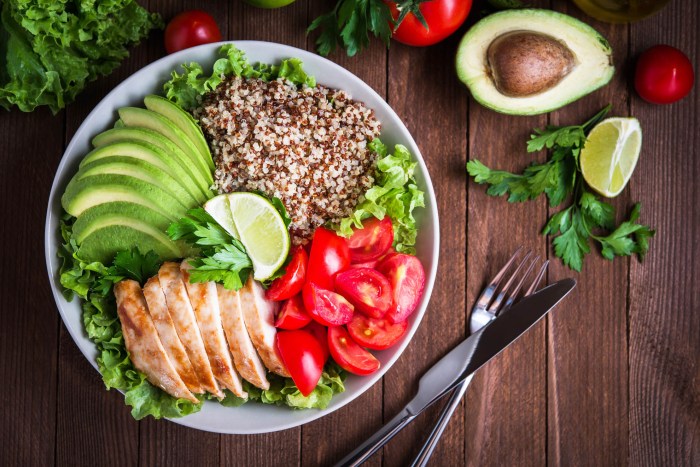
By following the tips and techniques Artikeld in this guide, you can confidently prepare pureed meals that are both nutritious and enjoyable for your loved ones. Remember, the key is to create a safe and enjoyable eating experience, promoting healthy eating habits and maintaining a good quality of life. So, let’s embark on this journey together, learning how to puree food for elderly individuals with care, compassion, and a touch of culinary creativity.
Key Questions Answered: How To Puree Food For Elderly
What are some signs that an elderly person might need a pureed diet?
Signs include difficulty chewing, choking, coughing while eating, and weight loss.
Can I use a regular blender to puree food?
Yes, a regular blender is a good option for pureeing most foods, but a food processor may be better for tougher ingredients.
How long can I store pureed food in the refrigerator?
Store pureed food in an airtight container in the refrigerator for up to 3 days.
What are some creative ways to add flavor to pureed food?
Use herbs, spices, citrus zest, and even a touch of sweetness to enhance the flavor of pureed meals.
Pureeing food for the elderly can be a helpful way to ensure they get the nutrients they need. It’s important to choose the right tools, like a blender or food processor, and to experiment with different textures to find what works best.
If you’re looking for a challenge, consider conquering the “Deity” difficulty in Civilization 6, which requires strategic planning and careful resource management, much like preparing a balanced meal. Civ 6 deity tips can provide some helpful insights, and you can apply similar principles when planning meals for the elderly, focusing on nutrition and variety.
Pureeing food for the elderly can be a helpful way to ensure they’re getting the nutrients they need, especially if they have difficulty chewing or swallowing. If you’re looking for a more restrictive diet, you might consider a carnivore diet, which focuses on meat, poultry, fish, and eggs, and eliminates all plant-based foods.
How to carnivore diet can be a great resource for learning more about this diet. However, it’s important to consult with a doctor or registered dietitian before making any significant changes to your diet, especially if you’re considering a restrictive diet like the carnivore diet.
Pureeing food for the elderly can make meals easier to eat and digest, but it’s important to remember that some ingredients can be tricky to process. For example, you might want to check if a common beverage like Diet Coke, which many seniors enjoy, is caffeine-free ( is diet coke caffeine free ).
Once you’ve considered all the factors, you can create delicious and nutritious pureed meals that meet the dietary needs of your loved ones.















